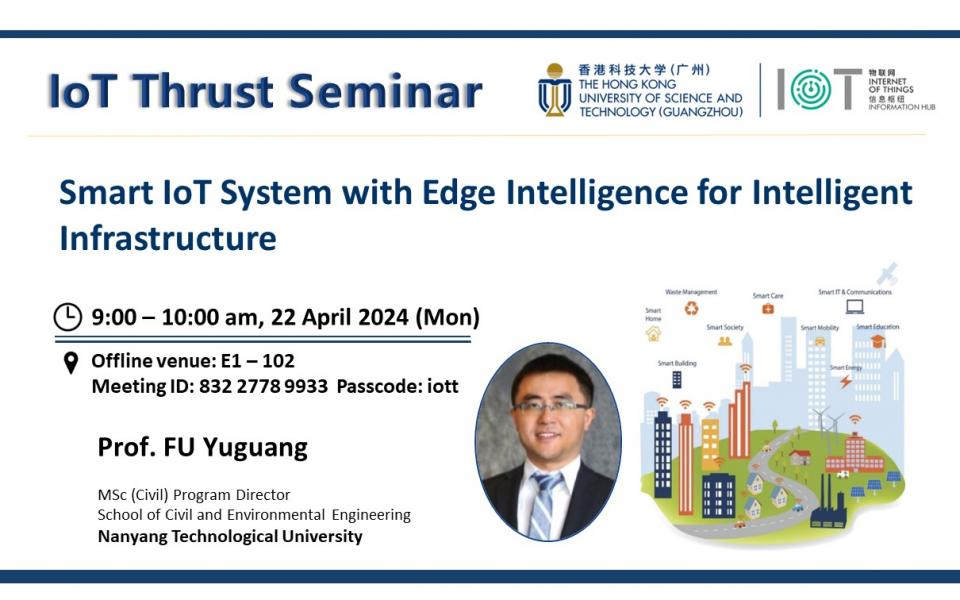IoT Thrust Seminar | Smart IoT System with Edge Intelligence for Intelligent Infrastructure
With the innovations of hardware, software and algorithms, wireless smart IoT sensors with edge intelligence have the great potential to enable intelligent infrastructure which is deeply embedded with sensing, communicating, computing, and controlling capabilities. To realize such potential, we are developing several novel IoT sensor nodes which can support on-demand sensing, live streaming, and distributed computing. In particular, edge intelligence techniques are pioneered, in which on-board computing of machine learning (ML) is executed to transform the raw information to actionable information which goes beyond the traditional edge computing towards scalable, reliable and adaptive SHM applications. Three effective strategies are explored for different aspects of SHM applications. The first strategy is to develop an integrated model compression method to achieve lightweight ML algorithms for data anomaly classification to enable reliable SHM applications, which is suitable for single sensor node. The second strategy is to develop a coordinated computing method for hetegroenous sensor networks for data-driven structural anomaly detection, which involves reference-free dynamic displacement estimation and guassian process regression model establishment/updating. The third strategy is to automate the real-time model-free damage detection using noise-robust blind source separation (BSS) and shapelet transform. A universal damage feauture is proposed to enable a simple ML model for accurate damage detection. The above proposed strategies has been evaludated and demonstrated in numerical simulation, lab tests and/or field deployments.
FU Yuguang received his B.Sc. and M.Sc. in civil engineering from Tongji University, China in 2012 and 2014, respectively. He earned his Ph.D. in civil engineering from the University of Illinois at Urbana-Champaign (UIUC) in 2019. Prior to joining NTU in 2021, he was a research scientist at Embedor Technologies in 2019. He then became a postdoctoral research associate in the Resilient Extra-Terrestrial Habitats Institute at Purdue University, funded by NASA, from 2019 to 2021. His research objective is to advance state-of-the-art smart sensing, digital twin modelling to make our built environment sustainable and resilient. He has participated several critical projects as PI, co-PI or key personnel, funded by NASA, NSF, FRA (in the USA), NSFC (in China), and MOE, NRF (in Singapore). He developed a wireless smart IoT system, commercialized it via the support of NSF-SBIR, and successfully deployed it on over 10 railroad bridges in North America. His team established a wireless monitoring framework for MRT railroad tunnel monitoring in Singapore, collaborating with LTA and SBST.
